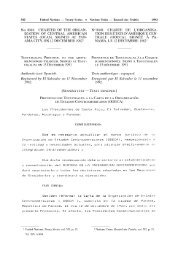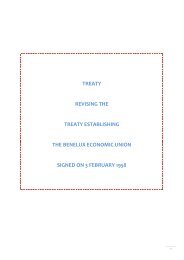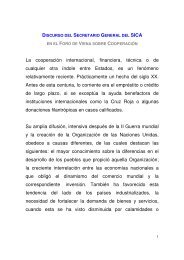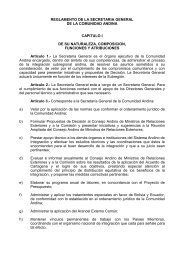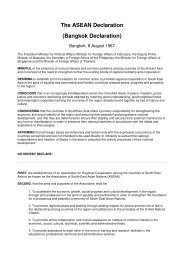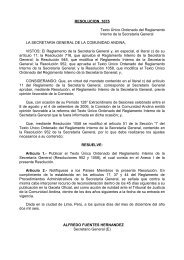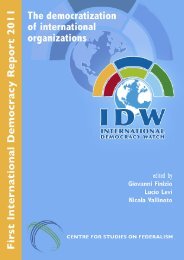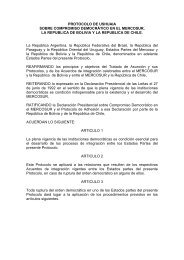Korwa G. Adar - International Democracy Watch
Korwa G. Adar - International Democracy Watch
Korwa G. Adar - International Democracy Watch
You also want an ePaper? Increase the reach of your titles
YUMPU automatically turns print PDFs into web optimized ePapers that Google loves.
East African Community – <strong>Korwa</strong> G. <strong>Adar</strong>1. IntroductionThe drive for the transformation of the East African region, particularly Kenya,Tanzania and Uganda, into a functioning entity with rights and duties in internationalrelations is not new. It dates back to the time when the three East African colonieswere still objects of international law. 1 The completion of the Uganda Railways (as itwas originally known) from Mombasa (Kenya) to Kampala (Uganda) by the Britishcolonial administration (1895-1903), set the stage for Phase I (1903-1947) of the formalsocio-economic and political cooperation and integration in the region. A number ofinstitutional mechanisms were established with the objective of promoting andinstitutionalising the colonial administration’s project on cooperation. They included,among others, the East African Posts and Telegraphs (EAPT-1890), the East AfricanCurrency Board (EACB-1905), the Customs Union (1917), the East African IncomeTax Board (EAITB-1940), and the East African Airways (EAA-1946). 2 However, a morestructured cooperation was realised with the formation of Phase II (1948-1961) of EastAfrican cooperation under the framework of the East African High Commission(EAHC), the corporate judicial body, by the colonial Office for the three Governors ofKenya, Tanganyika and Uganda as well as with the creation of the East African CentralLegislative Assembly (EACLA-1948), also known as the Legislative Council (LEGCO),as the main decision-making body (Tulya-Muhika 1995: 6). The common servesthereafter gradually acquired a centralised feature, with the EAHC and the EACLA asthe key decision-making bodies with functional responsibilities in the region.However, in 1961, the EAHC was again restructured into the East AfricanCommon Services Organization (EACSO) which established Phase III (1961-1967) ofthe East African regional cooperation, broadening the scope for the administration andoperationalisation of the common services. The persistence of the market inequalitiescoupled with the centralisation of most of the headquarters of the common services inNairobi, Kenya, continued to pose structural challenges to the EACSO, creating acentre-periphery relations in the region. As Newlyn (1971: 348) observes: “the gainsfrom East African common market were unevenly distributed between the1For details on the historical origins and the collapse of the East African Community see, for example<strong>Adar</strong> and Ngnyi (1992); Delupis (1970); Nye (1965); Potholm and Fredland (1980); Mugomba (1978).2 Tanganyika joined the Common Services at various stages after it became a British Mandate and later aTrustee Territory at the end of WW I and WW II respectively.




